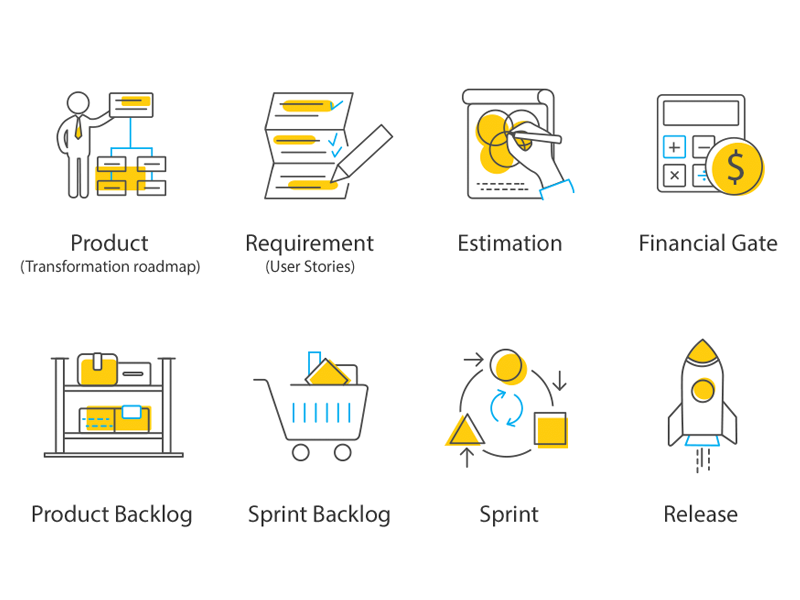Now for businesses having a digital presence is similar to the physical need of getting oxygen for survival. Since digital platforms have literally transformed the way customers interact with brands, no business any longer can do without digital platforms. But digital transformation is also happening fast and changing the business dynamics at a rapid pace. Many businesses still find themselves in clueless situations in trying to cope up with such rapid transformation. Only by hiring digital marketing services, they cannot meet these evolving needs.
Here we are going to discuss the key measures and considerations that businesses should take seriously for their digital transformation.
Principal Questions To Begin With

To begin with, a business needs to make a Comp, etc review of its present situation on the ground. To evaluate how an organization is really ready to cope up with the digital transformation, ask the following questions.
- Is your organization fully equipped and ready to work with the entire team working remotely?
- How can your company scale from the present digital avenues to new channels to mitigate the increasing demands?
- In what ways your company can deliver services and products by using online channels?
- How can you transform your existing brick and mortar shop into a fully-fledged digital shop front allowing contactless shopping experience to customers?
- How can your business reshape the supply chain or equip the manufacturing to meet the evolving demands of the digital business processes?
These are the key questions that every business is trying to cope with the digital transformation should ask. The answer to these questions will ultimately reveal how equipped and ready your business is to meet the evolving needs necessitated by digital platforms and tools.
The Need for Skilled Developers

In trying to transform your business by embracing digital platforms and applications you constantly need to face the need for skilled developers who can shape your digital storefronts and help you stand apart from the competition with unique customer experience.
To find the right developers for your business app or website, you need to ensure that the technology stack remains to be common. If you choose to opt for a complicated and less known technology for your digital presence, finding the skilled developers for development and support can be challenging in the long run.
Read More: How Low-Code Development Accelerate Digital Transformation
Make Sure Your Digital Solution Remains Scalable
Capability to scale up your development team and the output as per the evolving business needs us a crucial requirement for any business stepping on the digital space. You need to consider creative ways to avoid time-consuming screening, interviewing, and onboarding processes for finding the right talents when your projects need a quick supply of developers.
Embracing a Time Tested Development Methodological

For developing software solutions that deliver up to the evolving business needs, you need to embrace the right methodology that can take care of all challenges and development needs in a constantly evolving scenario. For full-stack development, you need a development process that minimizes process silos, frictions, and optimized pace of development by incorporating feedback and iteration.
Obviously, the agile development approach comes as the right answer to all these needs. But there are also DevOps approaches that can be appropriate for ensuring operational efficiency while building a software product. The Minimum Viable Product (MVP) in the mobile app development space emerged as a great approach to deliver a basic app at a quick time and ensure further value additions with future updates.
Whatever development methodology you choose, you need to ensure the following things.
- Faster development and faster time to market.
- Higher productivity for the developer team.
- Streamlined process with the collaboration of developers, operation staff, business strategists, and designers.
- Rapid prototyping involving all stakeholders.
- Allowing constant iteration and feedback through the development process.
- Constant evaluation and quality assurance testing.
- Focusing on a minimum featured product with a staged plan for rolling other features through future updates.
- Utilizing development resources in a way that leaves enough scope for future value additions.
Offshoring vs Nearshoring
Obviously, to minimize the challenges like finding the right talent pool of expert developers within the budget many companies prefer offshoring the development process and resources in a distant country. While in a connected world that kind of approach is quite justified, the gap of time zones, lack of understanding about different populations and markets, and other factors often result in difficulties for such offshore projects. On the other hand, a company can hire dedicated developers from nearby countries and this involves less of these challenges. This is why nearshoring projects have become more popular than offshoring without considerations to underlying challenges.
Some of the key advantages of nearshoring projects include the following.
- Getting a talent pool of developers, designers, and experts without needing to spend a fortune.
- Thanks to living in the same or closer time-zone, feedback, and relevant communication can take place within the same business day.
- Often the shared linguistic and cultural affinity helps create better bondage and collaboration among developers and other team members.
- Nearshoring typically brings you all the advantages of outsourcing while keeping the disadvantages at bay.
When shaping the digital footprint a company may need to develop a custom software product within a strict budget and for that outsourcing, the project may seem lucrative as an option. Nearshoring the project in nearby countries with a good talent pool comes as a better alternative.
Read More: How Digital Solutions for Restaurants Can Cope With The Social Distancing Norms?
Conclusion
Rapid digital transformation is already underway for most businesses around the world. From increasing the role of cloud support to the remote employee management through mobile-ready enterprise software, from connected workplace with the Internet of Things gadgets to intelligent data analytics helping the businesses to gain customer insights for building better strategy, the digital transformation of businesses are multifaceted and multilayered. Faster a company keeps this evolution rolling for their advantages, bigger as a brand it emerges now.
